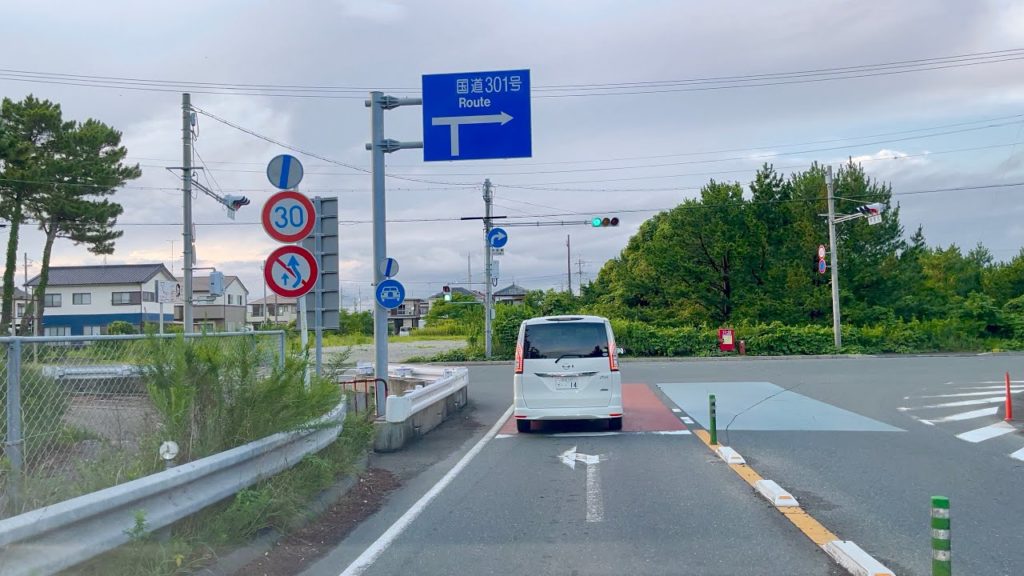#JapanRoadTrip #kosai #hamamatsu #Aichi #Japan #4KHDR #iPhone12ProMaxVideo
DATE: July 15, 2022
LOCATION: Kosai City, Aichi Prefecture, Japan
KOSAI CITY GUIDE:
Kosai (湖西市, Kosai-shi) is a city located in far western Shizuoka Prefecture, Japan. As of 30 June 2019, the city had an estimated population of 57,885 in 24,232 households, and a population density of 668.7 persons per km². The total area of the city is 85.65 square kilometres (33.07 sq mi).
Kosai is located in the far southwest corner of Shizuoka Prefecture, bordered by Aichi Prefecture to the west, Lake Hamana to the east. The name of the city means “west of the lake”, in reference to its location near Lake Hamana. The city is bordered to the south by the Enshū Gulf of Pacific Ocean. Due to its location, the warm Kuroshio Current offshore provides for a temperate maritime climate with hot, humid summers and mild, cool winters.
The city has a climate characterized by characterized by hot and humid summers, and relatively mild winters (Köppen climate classification Cfa). The average annual temperature in Kosai is 16.0 °C. The average annual rainfall is 1942 mm with September as the wettest month. The temperatures are highest on average in August, at around 27.3 °C, and lowest in January, at around 5.5 °C.
The area around Kosai has been noted for the production of Japanese pottery and porcelain since the Kofun period. During the Edo period, Kosai was tenryō territory administered directly by the Tokugawa shogunate, and the location of a barrier gate regulating traffic on the old Tōkaidō highway connecting Edo with Kyoto. A post station named Shirasuka-juku developed near the barrier, and this was the forerunner of modern Kosai. During the establishment of the modern municipalities system of the early Meiji period in 1889, the area was reorganized into five villages within Hamana District, Shizuoka. Four of these villages (Washizu, Iride, Shirasuka, Chibata) merged to form the city of Kosai on January 1, 1972.
On March 23, 2010, the town of Arai (from Hamana District) was merged into Kosai. Hamana District was dissolved as a result of this merger.
The economy of Kosai is dominated by light manufacturing of automobile components and electronics, as well as commercial fishing. Kosai is home to Suzuki Motor Corporation’s Kosai Assembly Plant, Suzuki’s main domestic production plant as well as to plants owned by Panasonic and Sony. Commercial fishing and aquaculture on Lake Hamana is also a component of the city’s economy.
HAMAMATSU CITY GUIDE:
Hamamatsu (浜松市, Hamamatsu-shi) is a city located in western Shizuoka Prefecture, Japan. As of 1 December 2019, the city had an estimated population of 791,707 in 340,591 households, making it the prefecture’s largest city, and a population density of 508/km2 (1,320/sq mi). The total area of the site was 1,558.06 km2 (601.57 sq mi). Hamamatsu is a member of the World Health Organization’s Alliance for Healthy Cities (AFHC).
Hamamatsu consists of a flat plain and the Mikatahara Plateau in the south, and a mountainous area in the north. It is roughly bordered by Lake Hamana to the west, the Tenryū River to the east, and the Pacific Ocean to the south.
Hamamatsu has a significant non-Japanese population. The population of Nikkei foreigners, especially Brazilians increased after a 1990 change in Japanese immigration law allowed them to work in Japan. At one point, Hamamatsu had the largest Brazilian Nikkei population of any Japanese city, Many foreigners work in the manufacturing sector, taking temporary jobs in Honda, Suzuki, and Yamaha plants. As of 2008 the number of non-Japanese in Hamamatsu was 33,332, and by 2010 the number exceeded 30,000. The city has a lot of Portuguese signage. It includes a Brazilian school, and many businesses catering to Brazilians display Brazilian flags. However, Natsuko Fukue of The Japan Times wrote in 2010 that many foreign children have difficulty integrating to society in Hamamatsu because “Japanese and foreign communities live largely separate from one another.”
The foreign population dropped significantly in the aftermath of the global financial crisis in 2008, with the Hamamatsu city government offering aid for some foreign nationals to return to their home countries. The foreign population was estimated as 25,084 as of August 1, 2019, per official city statistics.
Hamamatsu has been famous as an industrial city, especially for musical instruments and motorcycles. It also has been known for fabric industry, but most of those companies and factories went out of business in the 1990s. As of 2010, Greater Hamamatsu, Hamamatsu Metropolitan Employment Area, has a GDP of US$54.3 billion. 2014 Hamamatsu’s GDP per capita (PPP) was US$41,470.


AloJapan.com